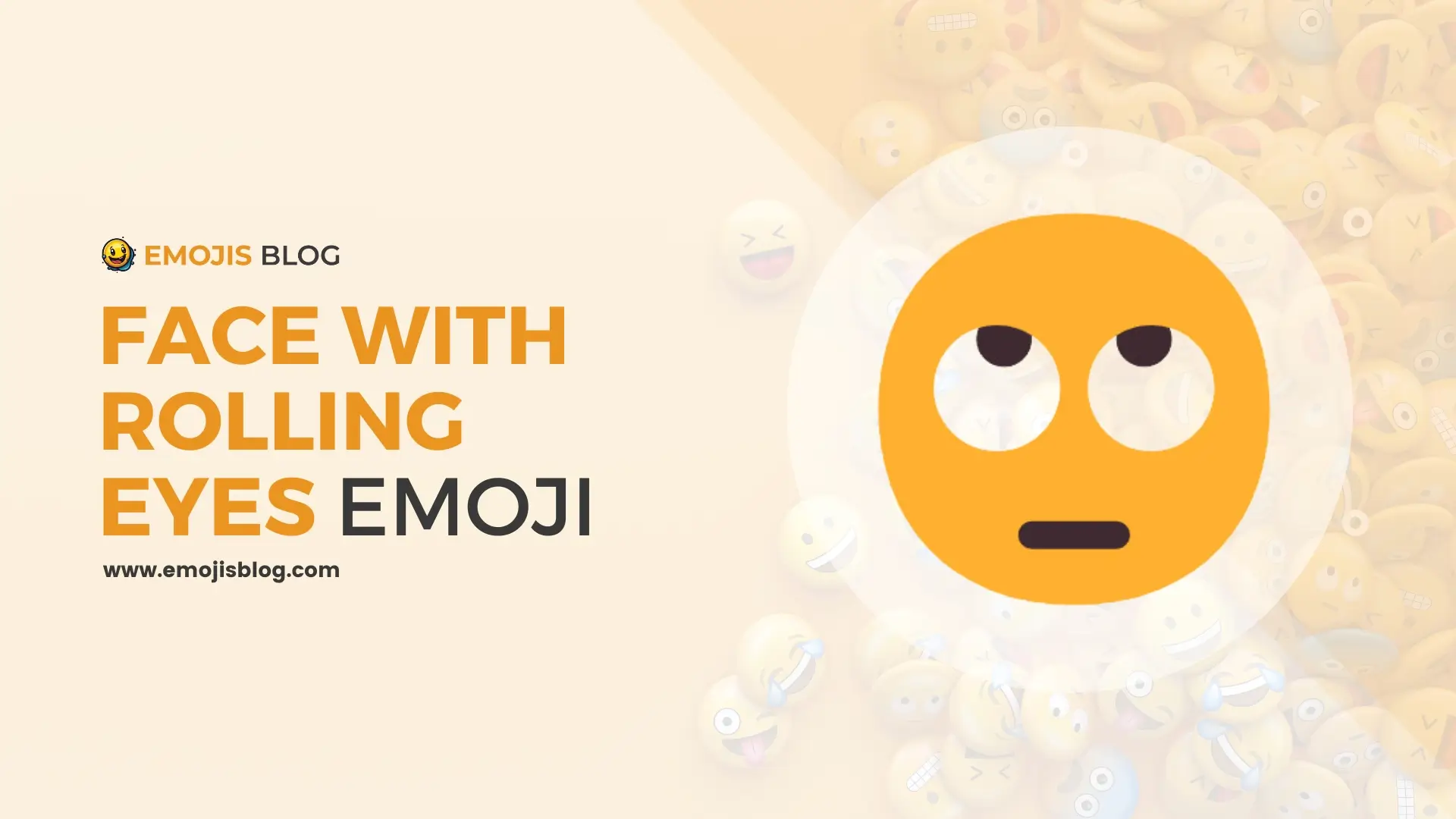What Does This Emoji Mean 🙄
🙄
What Does This Emoji Mean 🙄
The 🙄 emoji, commonly known as the “face with rolling eyes,” is a digital icon used to express a range of emotions, primarily exasperation, annoyance, skepticism, or disbelief. This emoji is characterized by a face with eyes turned upwards, a gesture that is widely recognized in many cultures as indicative of frustration or impatience. Its usage varies greatly depending on the context of the conversation and the relationship between the communicators, making it a versatile yet nuanced tool in text-based communication.
Technical Information
| Attribute | Information |
|---|---|
| Emoji | 🙄 |
| Name | Face With Rolling Eyes |
| Unicode Version | Unicode 8.0 (2015) |
| Emoji Version | Emoji 1.0 (2015) |
| Category | Smileys & Emotion |
| Subcategory | Face Negative |
| Codepoints | U+1F644 |
| Shortcode | :rolling_eyes: (in some platforms) |
| Description | A face with eyes rolled upwards. Often used to express annoyance, sarcasm, or boredom. |
| Platforms Supported | iOS, Android, Windows, Twitter, Facebook, and others |
| Keywords | Rolling eyes, eye roll, exasperation, disbelief, annoyance |
Understanding the 🙄 Emoji: A Comprehensive Guide
In the digital age, emojis have become an integral part of our online communication, adding nuance and emotion to our text-based conversations. One such emoji that often pops up in our chats is the 🙄 emoji. This article delves into the meaning, usage, and cultural significance of the 🙄 emoji.
What Does the 🙄 Emoji Represent?
Basic Interpretation
The 🙄 emoji, also known as the “face with rolling eyes,” typically signifies exasperation, annoyance, or skepticism. It features a face with eyes looking upwards, which in many cultures is a gesture associated with frustration or disbelief.
Contextual Usage
The meaning of the 🙄 emoji can vary depending on the context. It can range from a light-hearted expression of disbelief to a more serious indication of disapproval or irritation. For instance, in response to a joke, it might mean, “I can’t believe you just said that,” whereas in a more serious conversation, it could imply, “I’m frustrated with this situation.”
Cultural Variations in Interpretation
Western vs. Eastern Perspectives
In Western cultures, the gesture of rolling eyes is commonly understood as a sign of annoyance or impatience. However, in some Eastern cultures, the gesture might not be as readily recognized or could even have different connotations.
Generational Differences
Younger generations, who are more fluent in emoji language, might use 🙄 in a more playful or ironic manner, while older generations might interpret it more literally as a sign of disrespect or annoyance.
The 🙄 Emoji in Digital Communication
Enhancing Textual Conversations
The 🙄 emoji adds emotional depth to text messages, allowing users to convey feelings that might be hard to express through words alone. It acts as a non-verbal cue, similar to body language in face-to-face interactions.
Potential for Misinterpretation
While emojis can enrich communication, they also carry the risk of being misinterpreted, especially across different cultures or age groups. It’s important to consider the context and the relationship between the communicators when using emojis like 🙄.
Conclusion
The 🙄 emoji is a versatile tool in our digital communication arsenal, capable of conveying a range of emotions from mild irritation to playful disbelief. As with any form of communication, its meaning is shaped by context, culture, and individual interpretation. Understanding these nuances can enhance our digital interactions, making them richer and more empathetic.

